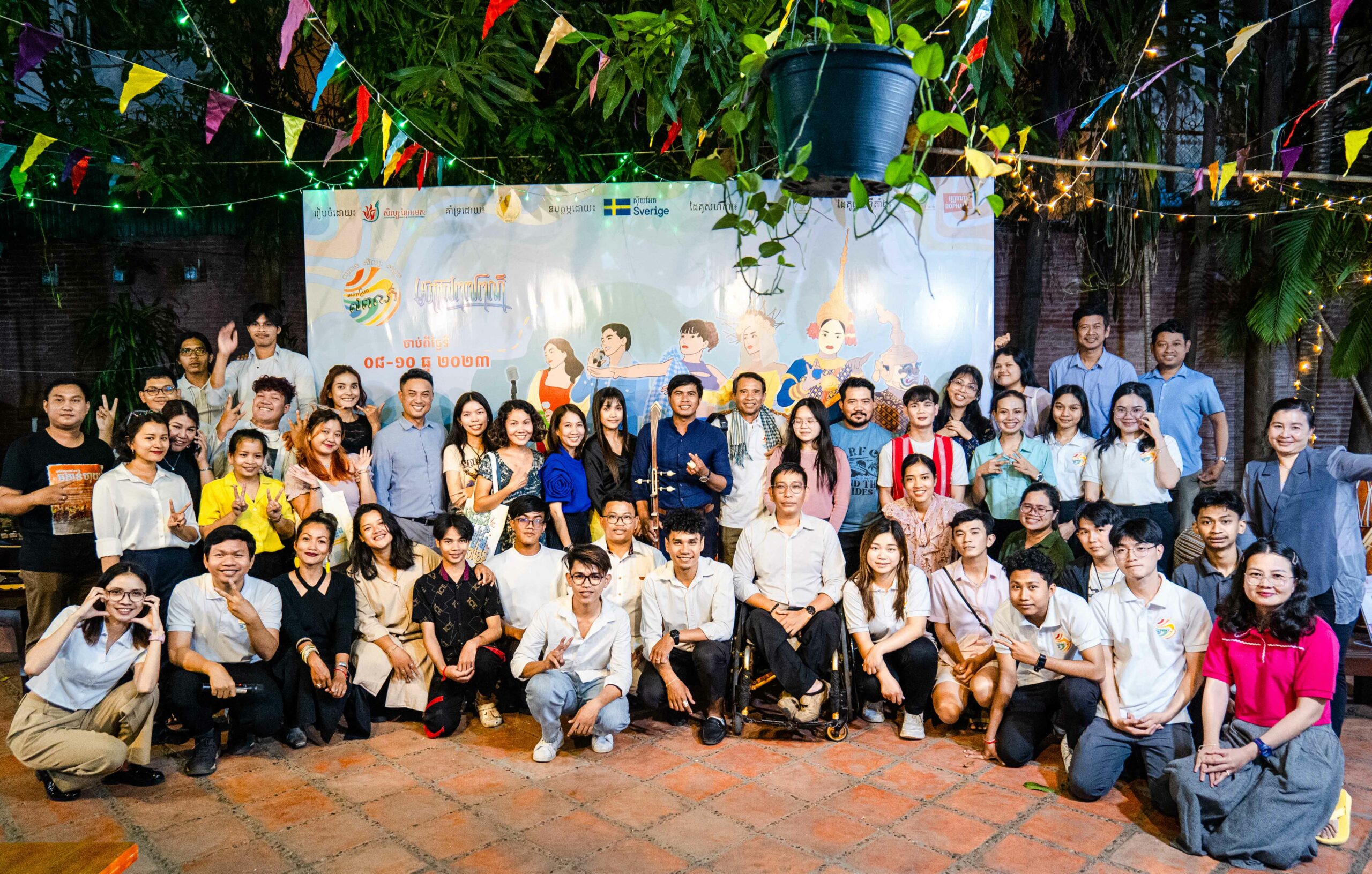Seven Colours Festival Hailed Resounding Success
CLA’s Seven Colours Festival was organized by four interns with the aim of providing an inclusive space for youth to explore and celebrate the arts
The Seven Colours Festival was curated by four young festival interns from various backgrounds that represent the diverse voices of Cambodian youth.
From December 8 to 10, the festival took place at Coconut Park on Koh Pich to connect youth and society through performances, panel discussions, knowledge and experiences that creatively promote diversity and social inclusion.
This is the first time Cambodian Living Arts (CLA) has provided youth who have been volunteering in social work and have no arts experience, with the opportunity to use their creativity to design programmes for an art festival.
Khoeun Kamsort, 26, currently a social worker in Ratanakiri province, was one of the festival interns. He decided to apply for the program after seeing the opportunity on CLA’s Facebook page and being inspired by seniors working in the arts.
“Even though I study social affairs, I like doing arts such as writing and drawing. So, I see this opportunity as allowing me to design a festival based on arts that help solve issues in society,”
Komsot said.
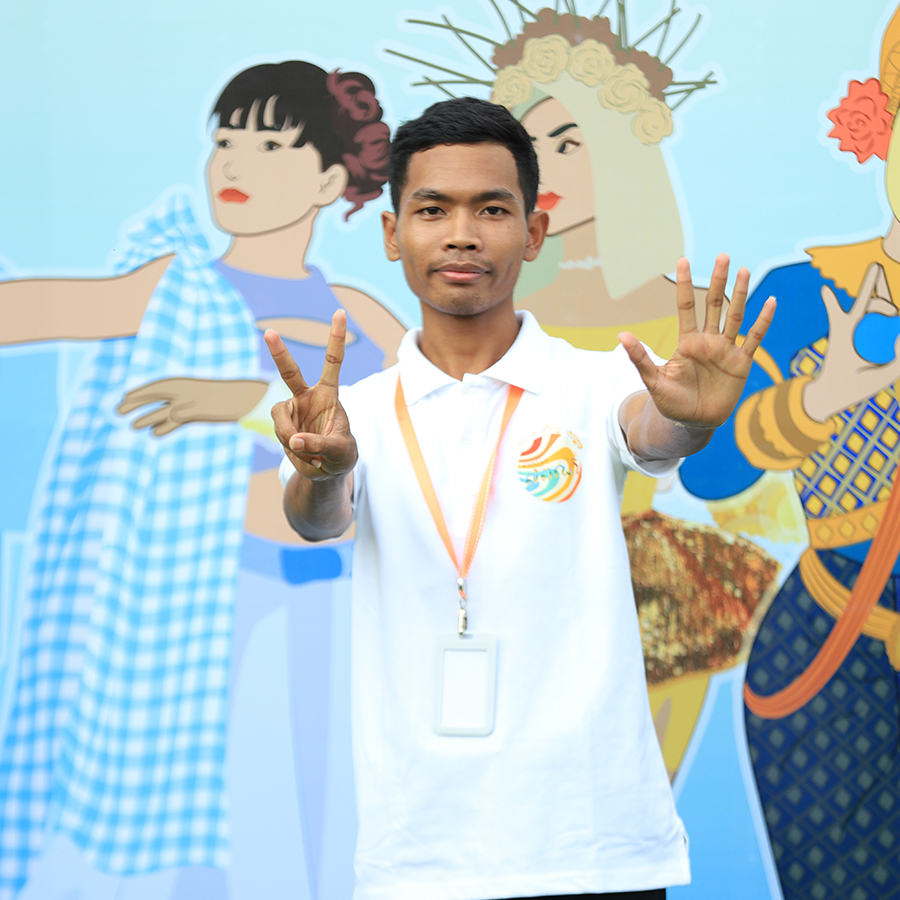
After working with the other three youth volunteers from July until early December, when the festival took place, Komsot reflected that he learned many new skills. He also began to dive deeper into the meaning of various types of art in Cambodia.
“I’m a social worker and don’t really know much about art. But when I became an art festival organizer, I started to know about the art forms, like traditional art, modern art, contemporary art, folk dance, drawing and many other types of art from watching art videos, researching and discussing with other artists,” he expressed.
Furthermore, designing art festival activities has taught Komsot how to work as part of a team comprising members from diverse backgrounds.
“Some of us have a lot of experience, some have little, and others have never experienced art-related work. Therefore, whenever we work together, we try to follow the target and goals that we have set to serve our target audiences, particularly youths,” he said.
Komsot added that team work requires more patience to understand one another’s perspectives, and good collaboration to come up with creative ideas to include in the festival. He has also learned how to design and establish an art festival.
“Before I only practiced other project works but for art, I had zero experience. When I joined, I started to know that we have to choose a topic and name of the festival, and what activities we should add in the agenda of the event.”
Why it’s called ‘Seven Colours’
The name ‘Seven Colour s’ represents the seven days of the week, which in traditional Cambodian culture are each associated with a specific colour to represent a value, including courage, justice and hope. The Seven Colour s concept also celebrates the inclusiveness in society, such as people with disabilities, indigenous people, LGBTQ+, and diverse religious believers.
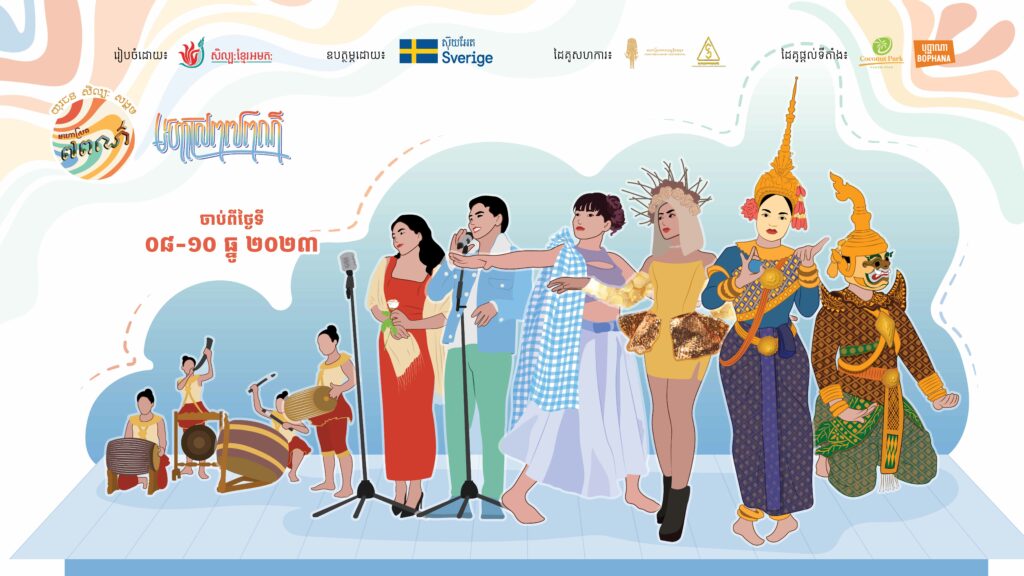
The three main sub-themes for the Seven Colour s Festival were Youths and the Past, Youths and the Present, and Youths and the Future.
“The reason we chose the sub-theme ‘Youths and the Past’ is because we see that both young and old never escape from past events. We want youths to look back to the memories like what they have come across in the past.”
He added, “We want them to see what they have done in the past that encourages and inspires them to become who they are in the present.”
‘Youths and the Present’ aims to inspire youths to reflect on who they are, what they are doing now, and what they can improve, not only in their personal life but also for the better of society as a whole.
“We see the importance of youths having to prepare themselves for the future, therefore, we want them to look forward to what they should do in the future and what they want in the future to make their dream become reality.”
Bringing engagement in arts
The forum, ‘The Role of Youth in Participating in Social Development through the Arts’, is one of the activities that Komsot was most interested in. The forum gave young artists and civil servants the chance to voice their personal views on the role of young people in helping arts in society grow.
“I see youths also interested in arts and want to participate in developing their communities. However, they don’t know where to start,” Komsot said, “The forum is a stage to allow Cambodian youths a chance to participate in expressing their thoughts with other stakeholders, such as the Ministry of Culture and Arts and public about their concern for the arts,” he said.
“Art can help us in many ways, such as drawing, writing articles, and poetry composition. It can relieve our mental health pressure as well. Whenever we have a problem with grief, we can write it down, express our emotion through painting.”
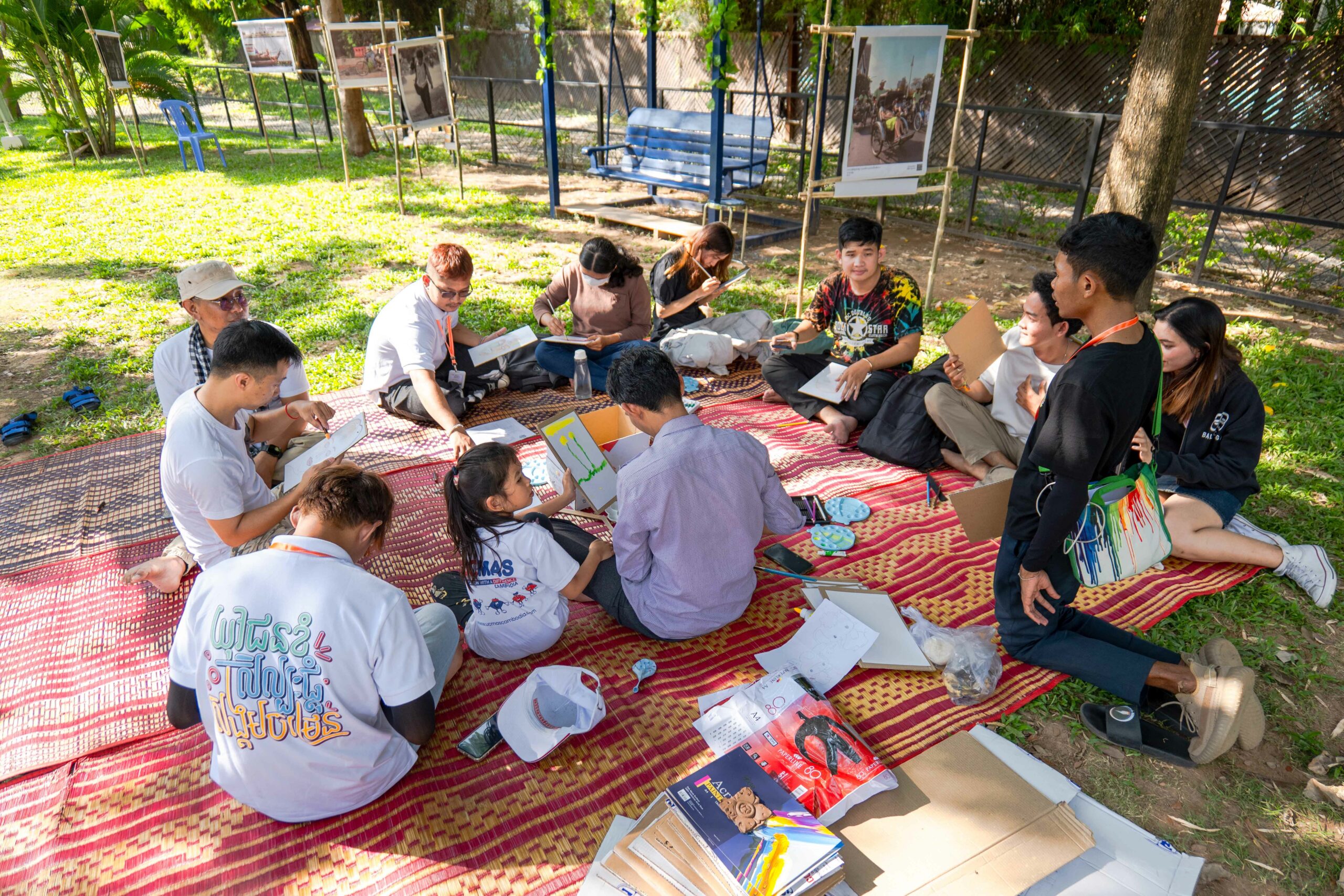
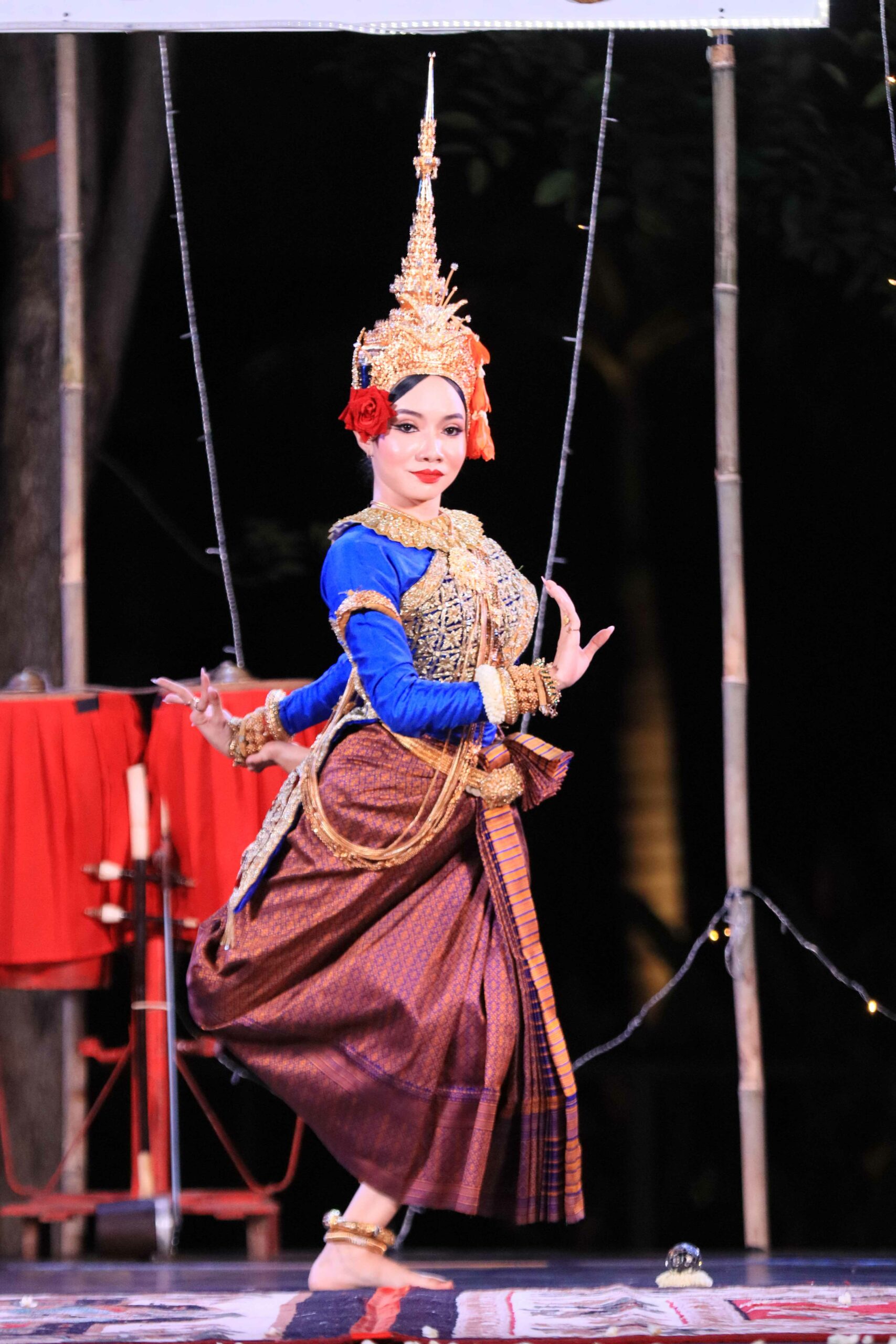
Indigenous dancing on stage
As a youth from Ratanakiri province, Komsot introduced his indigenous community to festival goers through traditional Phokphal Dancing, which means ‘Fruitful Dancing’.
“I see this traditional dancing illustrates the lives of people who not only live in Ratanakiri but also those who live in other provinces whose life is connected with nature and harvesting fruits and crops happily. It also includes the traditional clothes of indigenous people in dancing that makes me want to deliver it to the show.”
As a social worker who works closely with his community, he always tries to raise awareness related to domestic violence, violence against women, and marriage at a young age. He thinks art can play a significant role by interpreting those key messages to the community through creative photo design and writing workshops.
“I think the Seven Colours Festival has connected youth to the arts. Meanwhile, it also encourages other youths to become involved with us and help preserve the culture for developing the nation,” Komsot noted.
Ouk Lykouryu, 21, a Year 2 student at Institute of Foreign Languages (IFL) and part-time clay teacher, was also an intern in the program.
Through weekly training and guidance from the other seniors in arts fields, Lykouryu learned more about Cambodian arts and building teamwork spirit.
Kouryu’s responsibilities were communicating with artists, organizing a fashion show, and working as a panel discussion facilitator. She found opportunities and challenges organizing an art festival for the first time.
“There were some challenges along the way, such as team work challenges and clashing of ideas since we are all from different backgrounds,” she said. However, she overcame these issues through communication.
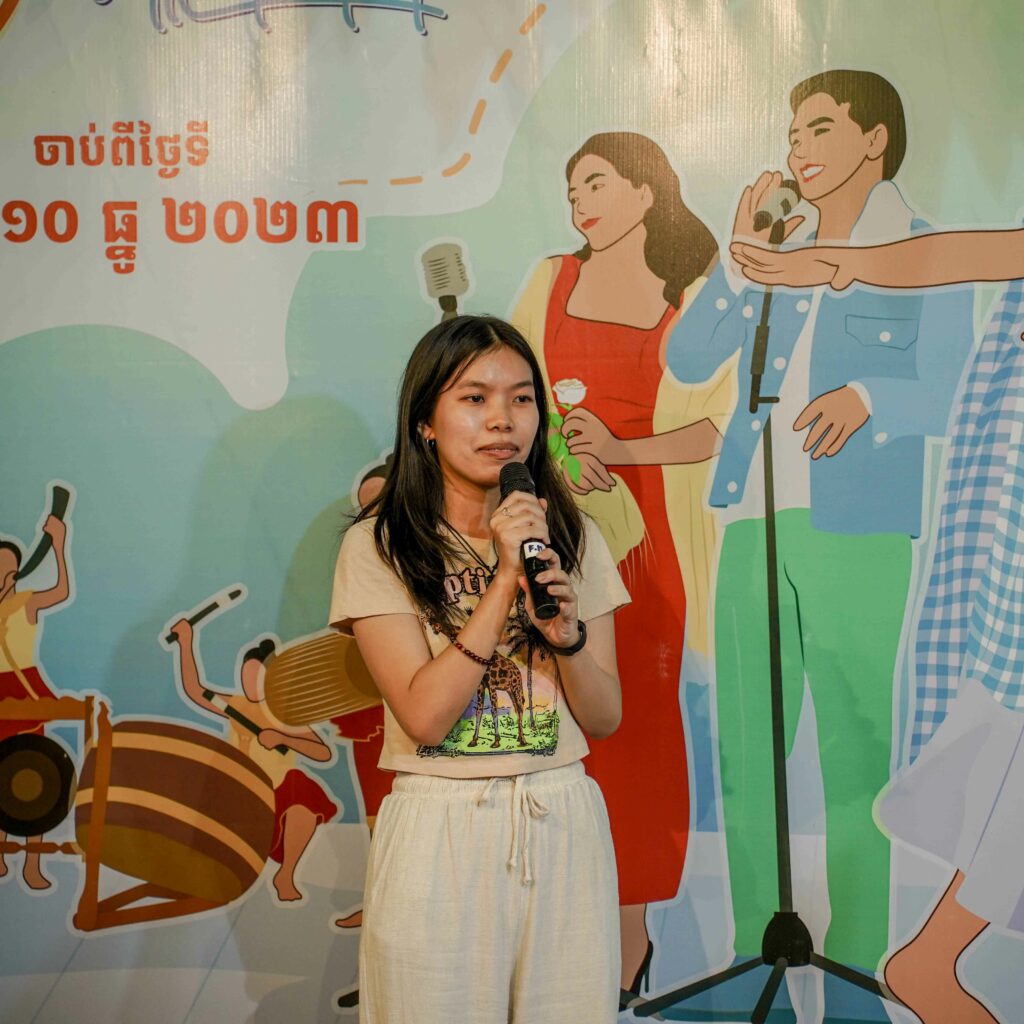
Mental health & arts
“Mental health is not limited to age; people of any age still face mental health issues. We wanted to raise this topic in the festival to raise awareness among the audience that by participating in the event they will gain more knowledge about mental health and finding solutions,” said Kouryu.
“The word ‘arts’ really has a huge meaning. No matter what form of art, it always helps us to reconcile our psychology in their own different ways.”
The young intern thinks Cambodian art is moving, revolutionizing and developing in recent decades. However, she is urging the next generation to promote the value of Cambodian art works, which will empower artists.
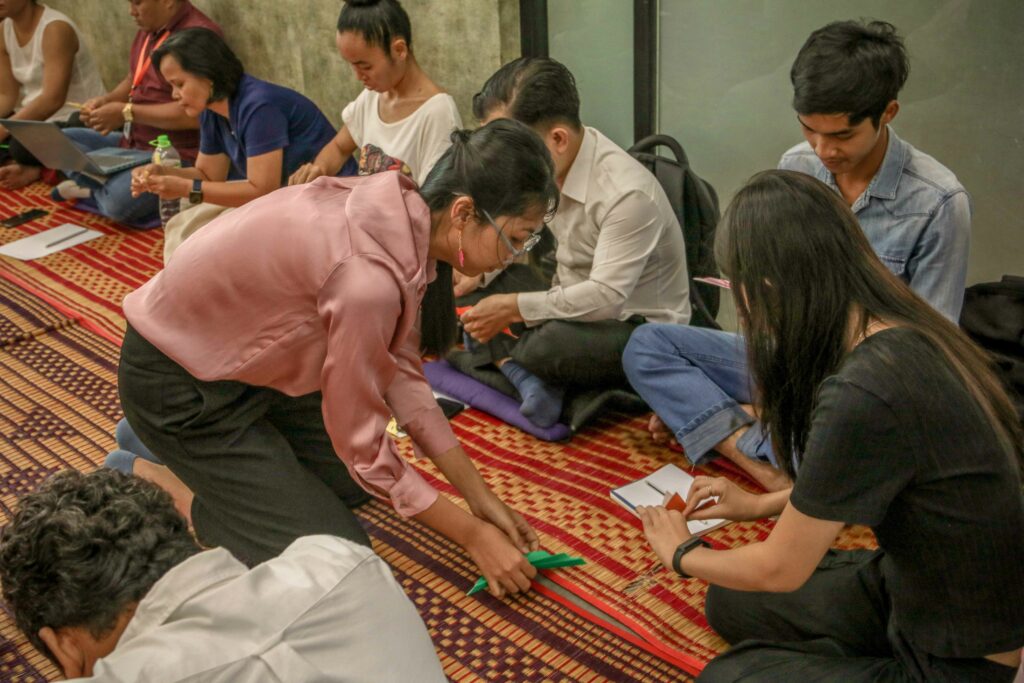
She feels inspired by the positive feedback from participants that joined the festival, providing her with motivation and hope that the festival will become an annual event in Cambodia’s calendar.
“Before we used to think that we just tried to make the event happen physically only this year. But after we established the event, we feel inspired after hearing participants give positive feedback to us. We want to continue it,” she mentioned.
“I hope young people in the next generation will be able to see the value of art and the ‘Seven Colours’ festival to motivate others to participate together. We hope that all the participants that join the festival not only come for fun but to understand the key messages that the event tries to deliver.”
Meak Bopharatanak, 21, studying Interior Design at the Royal University of Fine Arts, said the curiosity of arts and how to organize events that bring positive impact through arts inspired her to join the festival intern program.
“After interning, I received additional knowledge about arts via training from CLA and researching more arts information such as contemporary dance , talking theater, reading theater and many other performing arts,”
Bopharatanak expressed.
She added that she also learned how to work actively with a team and understand behind-the-scenes of organizing events from other artists.
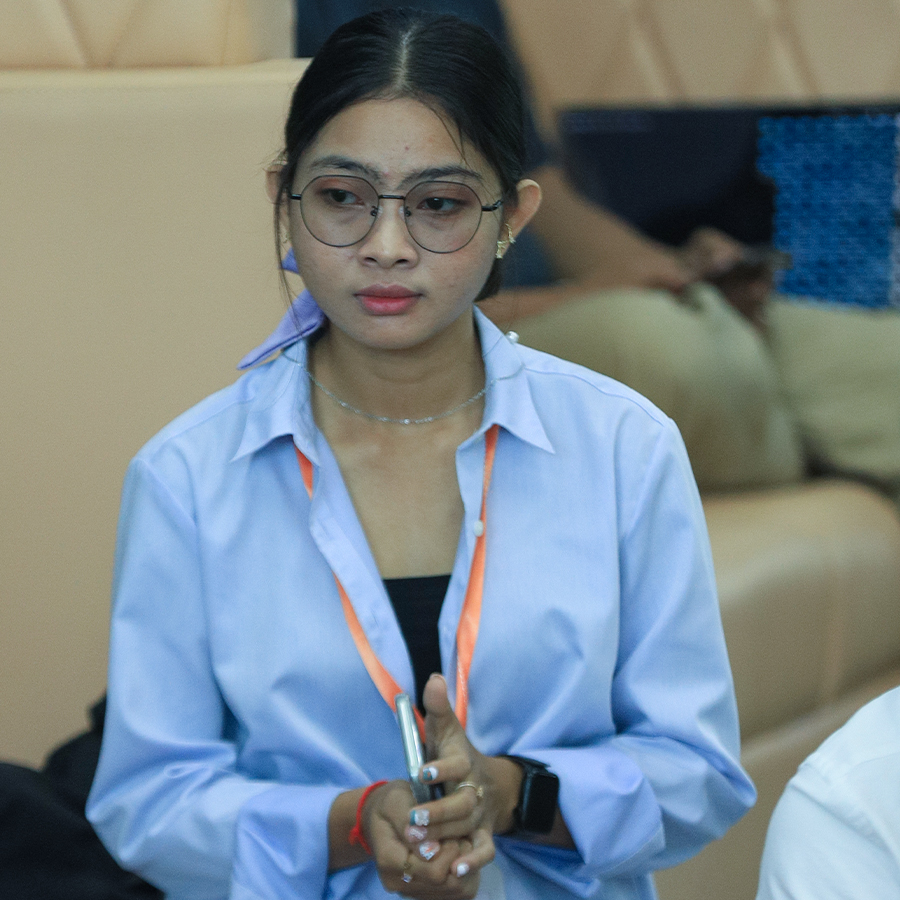
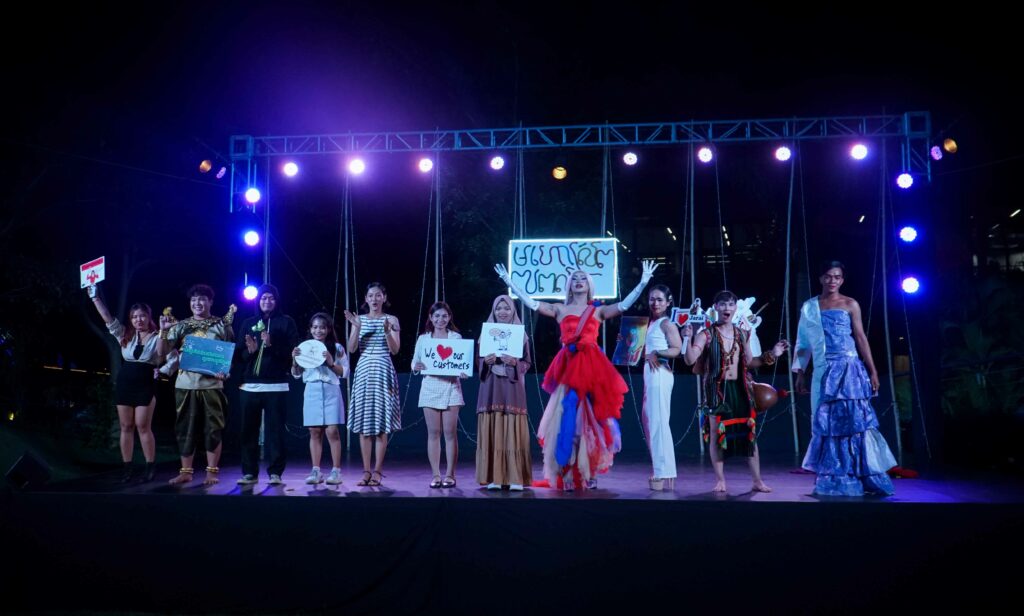
Fashion show promotes self-identity
The event’s fashion show was one of the activities that impressed Bopharatanak the most. “The fashion show delivered the key messages for youths to be confident to express their true identity and value themself,” she said.
Bopharatanak added that the arts helped her to find her true self and incorporate her creativity into her daily work in the architecture field.
The most creative festival ever
Song Seng, project coordinator of the Seven Colour s Festival, said the event is part of a CLA research project that selected four youths with little or no experience in preparing an art festival to express their creativity and self-expression through designing arts.
“As we can see, most of the art events are organized and designed by the artists themselves that have many experiences in it. On the other hand, we have never known how creative the youths are in designing an art festival before. Therefore, we organized this festival program,”
Seng said.
In May 2023, the four interns were selected and began to work on designing the agenda and the name. “Since youths are all new to designing this kind of arts festival, there were many challenges along the way, like they didn’t have enough confidence to make events happen and there are many things that they need to learn and research more about arts.”
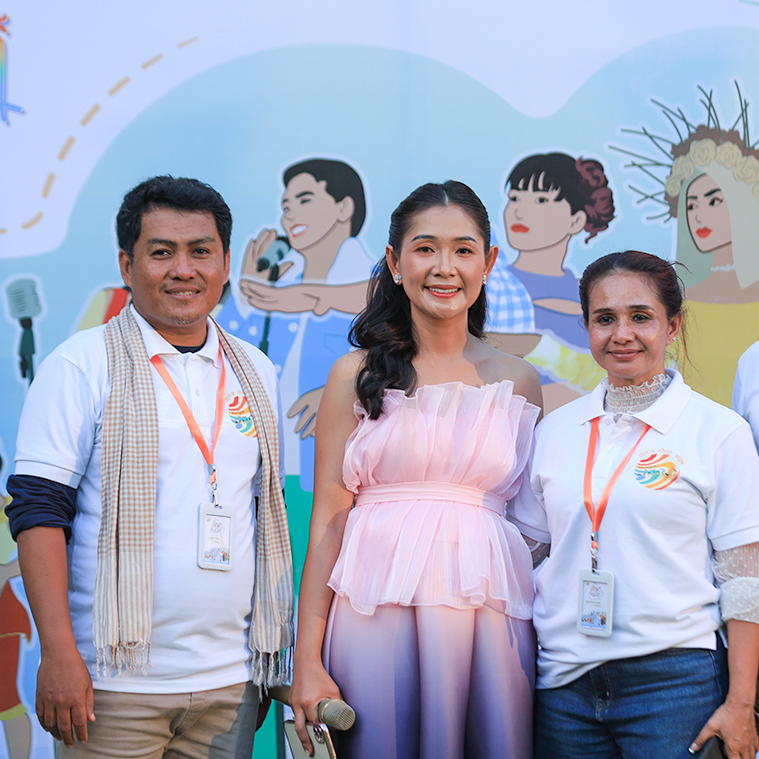
Reflecting on the festival, CLA Program Director, Yon Sokhorn is ‘inspired by the interest and commitment from the interns involved in the program. They succeeded in creating a friendly and open atmosphere at the festival, which made it a really special experience for participants.’ As we go into 2024, CLA continues to seek new ways to involve new audiences in the arts, and to build bridges between the arts community and wider society. We believe arts is at the heart of every vital society, and as the world gets more divided it has an important role to play in creating community and building empathy.
